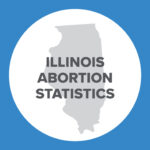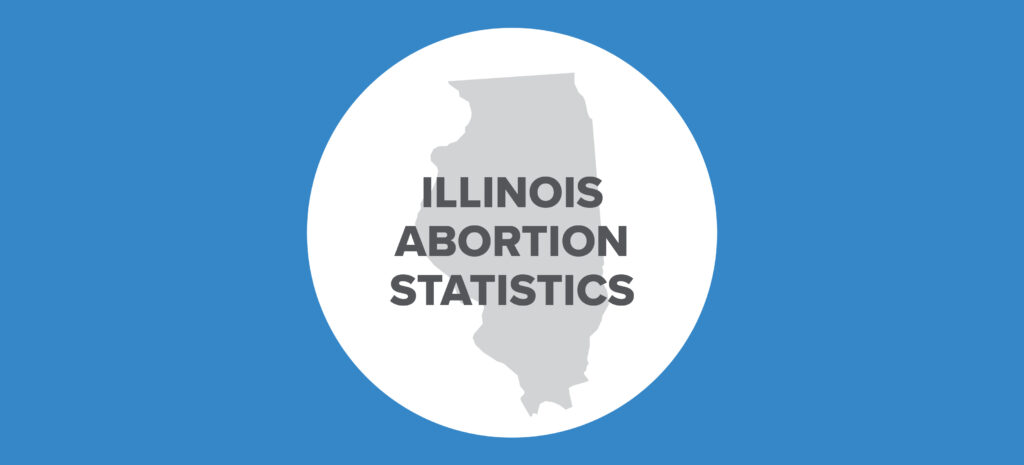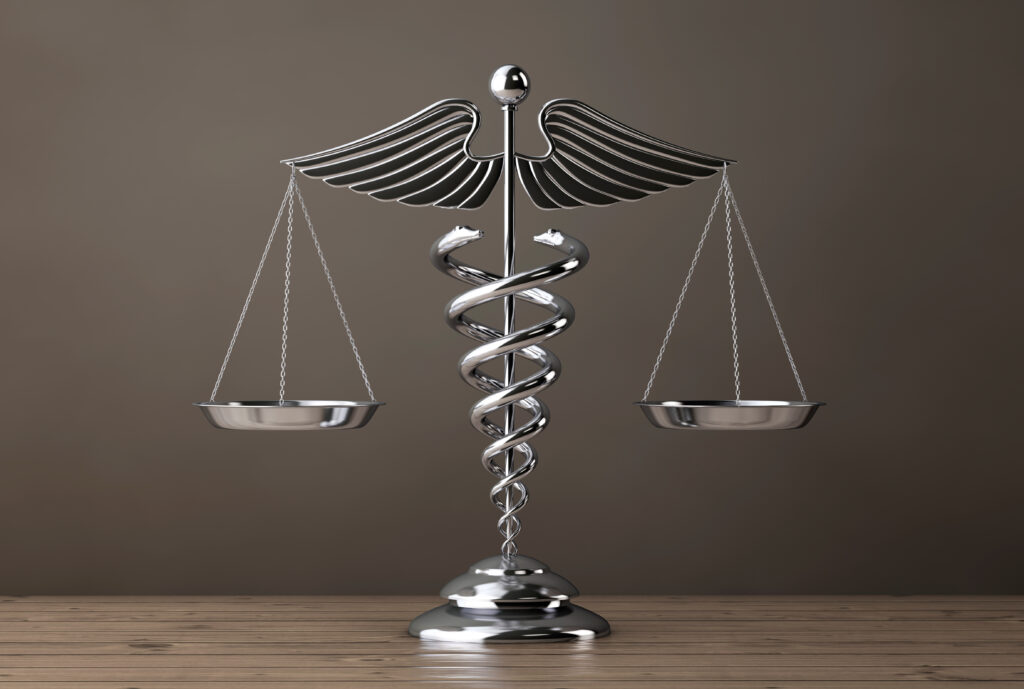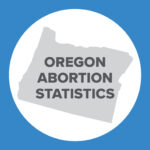Abortion Reporting: Wisconsin (2022)
Wisconsin’s 2022 abortion report was released in January 2024, showing that abortions decreased significantly from 2021.
Statistics and Changes in Wisconsin Abortions, 2021-2022

The change in total abortions and drug-induced abortions reflects abortions performed on Wisconsin residents. The change in the abortion rate reflects all abortions reported in Wisconsin, including those obtained by non-residents. The report does not include information on Planned Parenthood’s Wisconsin abortion market share.
Abortion Totals and Trends
Wisconsin reported 3,333 abortions in 2022, down 49% from the year before. Of these, 3,279 were performed on Wisconsin residents, including 1,171 drug-induced abortions (Fig. 1). Drug-induced abortions performed on Wisconsin residents decreased by 53% from 2021 and made up 36% of total Wisconsin resident abortions in 2022. The Charlotte Lozier Institute (CLI) estimates that Wisconsin’s abortion rate decreased by 50% from 2021 to three abortions per 1,000 women ages 15 to 44 (Fig. 2).1 As of January 2024, 34 states had released 2022 abortion statistics; 13 of these states reported that abortions had decreased.
State Report Summary
In 2022, 98% of the abortions occurring in Wisconsin were performed on state residents, while 2% were obtained by nonresident women. Three percent of the abortions were on girls under the age of 18, and 7% were on girls aged 18 to 19. Thirty-three percent were performed on women ages 20 to 24, 26% on women ages 25 to 29, and 28% on women in their thirties. Three percent were performed on women aged 40 or older.
There were 103 abortions performed on Wisconsin residents under the age of 18. Nine minors obtained judicial waivers of Wisconsin’s parental consent requirement, and 94 minors had adults provide consent on their behalf. Of those 94 cases, 85 had consent provided by a parent and nine had consent provided by a guardian or legal custodian.
Half the abortions, 52%, were on white women. Thirty-six percent were performed on black women, and 3% on women of Asian or Pacific Islander descent. One percent of the abortions were on Native American women, and 2% on women with multiple races. One percent were obtained by women of other races, and 3% were on women of unknown races. Eighty-six percent of the abortions were on non-Hispanic women, 13% were on Hispanic women, and not quite 1% were on women of unreported ethnicity. CLI estimates that the black abortion rate, 13.5 abortions per 1,000 women ages 15 to 44, was seven times higher than the white abortion rate of 1.9.
Eighty-nine percent of the abortions were on unmarried women, 10% were on married women, and less than 1% were on women of unknown marital status. Eight percent of the abortions were on women who had not graduated from high school. Fifty-three percent were on women with only a high school diploma or GED and 26% were on women who had attended some college or who had an associate degree. Twelve percent were performed on women with a bachelor’s degree or more. Level of education was not reported for 1%.
More than half the abortions (54%) occurred at eight weeks of gestation or earlier. Twenty-two percent were performed between nine and 10 weeks, and 10% between 11 and 12 weeks of gestation. Eight percent were performed from 13 to 15 weeks, and 6% from 16 to 20 weeks of gestation. There were 12 abortions, less than 1%, performed after 20 weeks of gestation.
Information on the types of abortion procedure is provided for abortions performed on Wisconsin residents only. Of the abortions performed on Wisconsin women, 64% were performed using surgical procedures, and 36% were drug-induced abortions. In addition, there were eight failed or incomplete drug-induced abortions that were completed surgically. The Wisconsin Department of Health Services told CLI that there is no way of determining whether any of these incomplete abortions were also included in the total count of drug-induced abortions. If these incomplete drug-induced abortions were double counted, they would slightly inflate Wisconsin’s 2022 abortion total and rates.
In 2022, 92% of the abortions were reported to have no complications.2 Multiple complications can be reported for each abortion, and the most frequently reported complication was retained products of conception, occurring 253 times—an increase of 549% from 2021 when there were almost double the number of abortions that occurred in the state. There were 14 cases of cervical laceration, five cases of hemorrhage, two cases of infection, and one case of uterine perforation. The report acknowledges the possibility that “some complications are missed or misreported.”
Legislative Changes
The day Roe v. Wade was reversed by the Dobbs decision (June 24, 2022), abortion in Wisconsin became limited to medical emergencies. However, on June 28, 2022, the governor of Wisconsin, Tony Evers, and the Attorney General, Josh Kaul, filed a lawsuit challenging the state’s life-at-conception law. While the state, under AG Kaul, chose not to enforce the law, at least one local, district attorney chose to enforce the law in spite of the AG’s decision. Because of the uncertainty of the law’s legal status, a number of abortion centers in the state suspended abortion services for several months in 2022 (according to the state’s abortion report). As such, abortions decreased to zero in the months of July through December 2022.
| Abortion Totals on Wisconsin Residents – 2022 | |
| January | 498 |
| February | 537 |
| March | 600 |
| April | 573 |
| May | 603 |
| June | 468 |
| July | 0 |
| August | 0 |
| September | 0 |
| October | 0 |
| November | 0 |
| December | 0 |
| Total | 3,279 |
In July 2023, a county judge ruled that Wisconsin’s pre-Roe life-at-conception law does not prohibit elective abortions. While this ruling did not end the lawsuit that the state had brought against the law, Planned Parenthood centers in Madison and Milwaukee felt that the ruling allowed them to resume providing abortions in September 2023. In December 2023, the same county judge reaffirmed her July 2023 decision. Currently, abortion remains legal through 21 weeks of gestation in the state.
State Ranking
In 2016, CLI evaluated abortion reporting in the 50 states as well as New York City and the District of Columbia. Wisconsin’s reporting was tied for 17th best. To improve its reporting, Wisconsin could report the types of surgical abortion procedures with more specificity and the types of procedures for all abortions that occurred in the state, not just those obtained by resident women. Wisconsin could also indicate whether complications stemmed from drug-induced or surgical abortions. In addition, Wisconsin could amend its abortion reporting form to allow providers to indicate whether they reported weeks LMP (last menstrual period) or estimated the length of pregnancy.
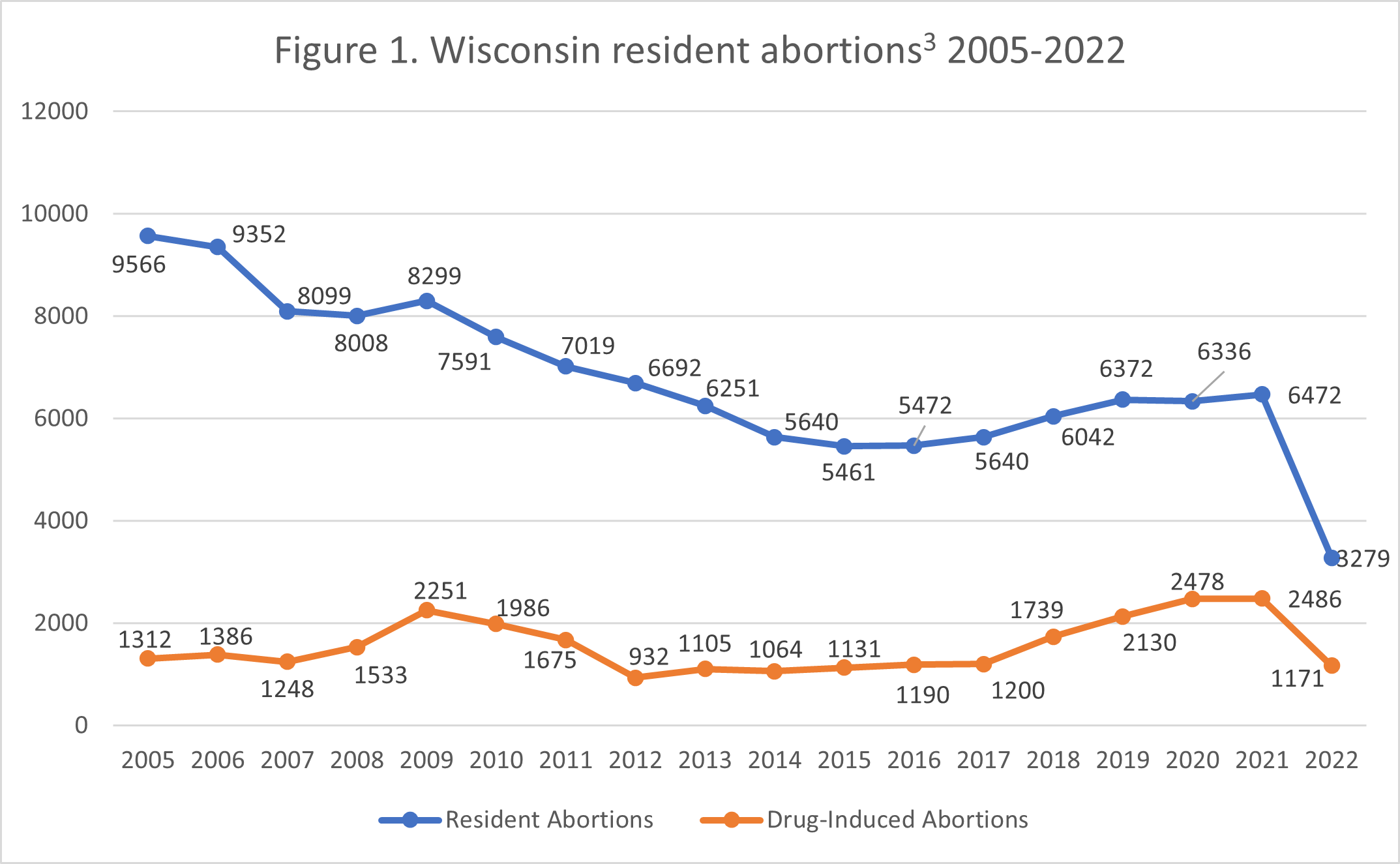

- National rates were calculated using data from the Guttmacher Institute. Wisconsin rates were calculated by CLI using the following formula: (total number of abortions performed in Wisconsin ÷ number of resident women ages 15-44 [based on most recent population estimates]) x 1,000. Rates may differ slightly from previous CLI articles due to revised population estimates. Population estimates were obtained from the CDC WONDER database. Estimates for 2005-2009 are intercensal estimates of the July 1 resident population. Estimates for 2010-2019 are Vintage 2020 postcensal estimates of the July 1 resident population. Estimates for 2020-2022 are Vintage 2022 postcensal estimates of the July 1 resident population. Estimates were produced by the U.S. Census Bureau and the National Center for Health Statistics.
- Statistics on abortion complications reported here represent a minimal number of deaths and complications, as this data is collected in a non-systematic and non-verifiable way. As such, this data cannot be used to calculate either an accurate abortion mortality rate or an accurate abortion complication rate for the state. The report cautions that “[a]ssessing the incidence of complications is somewhat problematic. Some complications do not occur immediately or become apparent while the patient is in post-procedure recovery, therefore, some complications are missed or misreported.”
- Because the Wisconsin Department of Health Services is unable to tell whether an incomplete drug-induced abortion was previously reported as a drug-induced abortion, CLI is unable to determine if these incomplete abortions are included in the totals for drug-induced abortions.











